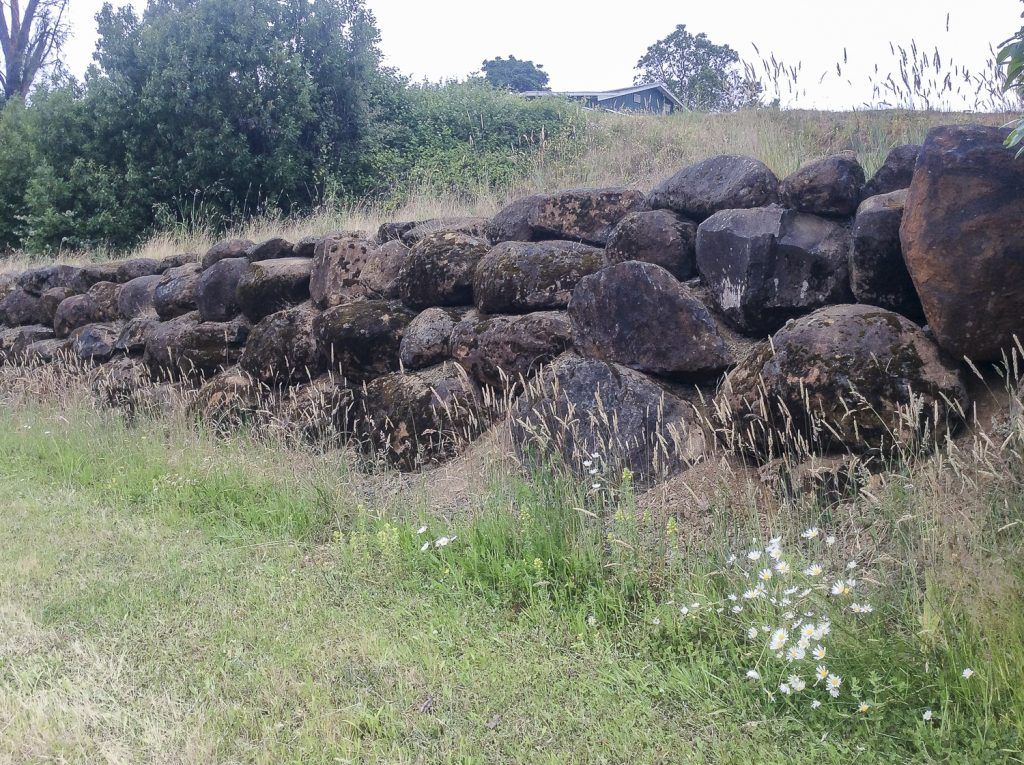
More about the Geology at Three Feathers
I have always had an interest in Geology and Natural History but it was only moving to The Pacific Northwest, where evidence of geological turbulence is all around us that I more fully appreciated the instability of nature. “Solid as a Rock” is a complete falsehood. We see around us the constant changes in the landscape from the geologic history of the region.
Take Chehalem Mountains in general, and Three Feathers Vineyard in particular. We have mentioned in previous articles the Laurelwood soils but the creation of this particular bit of earth is very interesting.
Our mountain is the creation of the Pleistocene Era that started 1.8 million years ago and ended roughly 12,000 years ago although some accounts feel we are still in that era. This is the most recent of several Ice Ages. The underlying structure of the range is described by various accounts as the result of uplift or plate activity. Indeed, we are told that there is a seismic station on the mountain to register any seismic activity. In 1991 we experienced a minor earthquake.
During the Pleistocene the Earth experienced large fluctuations in temperature. Glaciers expanded and contracted. Ellen Morris Bishops states in her book In Search of Ancient Oregon: A Geological and Natural History:
“For most of the 1 million years of the Pleistocene, an unremitting battle was fought between Cascade eruptions that sought to build a mountain range, and Cascade glaciers that worked to wear it down”.
– Ellen Morris Bishop, In Search of Ancient Oregon: A Geological and Natural History
During this period there were frequent tremendous unimaginable floods that were created by either lava or ice damming in the region. Millions of tons of mud, gravel and boulders were washed into the area from the north- called the Missoula Floods as some of them originated as far away as Montana. Underlying our soil at Three Feathers are massive basalt boulders worn round by flooding. You can see these boulders were used to create the retaining wall at our barn. Some boulders were too big to move and are found on the property. Regionally called “dirty basalt” these rocks are reddish from the iron ore found in them.

On top of the boulders is layered our Laurelwood soil. Described by PinotFile as: “…silty, nearly ashy, rock flour deposited on the mountains from powerful winds from the surrounding landscape during the last Ice Age……” This type of soil is called Loess – or windblown. This red soil is high in iron and very acidic. Naturally as the particles are fine enough to be blown it is extremely delicate. The six to ten feet of Loess soil at Three Feathers is designated “highly erodible” so we much be careful not to overwork it. It also lacks humus or organic material that characterizes soil that has had long periods of vegetation on it. If left alone Douglas Fir trees sprout like weeds- as close as 6 inches apart. To sweeten the soil, we add ground limestone to help the vines absorb nutrients.

All of these factors contribute to the unique production that are the Three Feathers grapes and wine. The combination of the soils, the aspect of the vineyard and the individual grape clones contribute to the mineral and spice flavors in our wines. As we say on our bottles:
“Terrior – What Defines Us”

